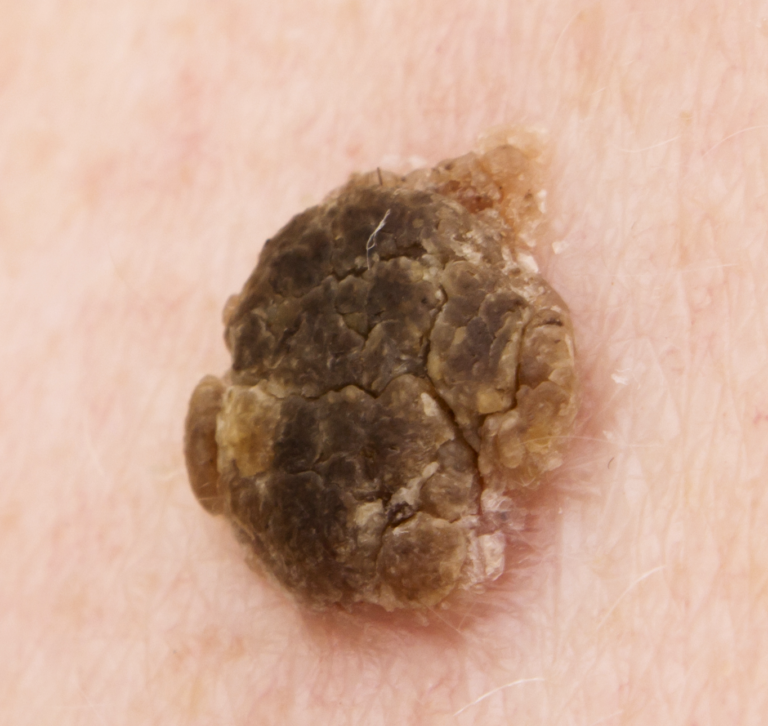A Seborrheic Keratosis is a very common skin lesion. People tend to get more of them as they age. Seborrheic keratoses are usually brown, black or light tan. The growths (lesions) look waxy or scaly and slightly raised. They appear gradually, usually on the face, neck, chest or back. We understand the frustration of dealing with seborrheic keratoses. At the Trillium Clinic, our solutions are designed to address the physical and cosmetic symptoms of these itchy, unsightly lesions.
What are Seborrheic Keratoses?

Seborrheic keratoses are harmless and not contagious. A seborrheic keratosis grows gradually. They don’t need treatment, but you may decide to have them removed if they become irritated by clothing or you don’t like how they look.
What are Signs and Symptoms of Seborrheic Keratoses?
- A round or oval-shaped waxy or rough bump, typically on the face, chest, a shoulder or the back
- A flat growth or a slightly raised bump with a scaly surface, with a characteristic “pasted on” look
- Varied size, from very small to more than 1 inch (2.5 centimeters) across
- Varied number, ranging from a single growth to multiple growths
- Very small growths clustered around the eyes or elsewhere on the face, sometimes called flesh moles or dermatosis papulosa nigra, common on Black or brown skin
- Varied in color, ranging from light tan to brown or black
- Itchiness
What causes Seborrheic Keratoses?
Experts don’t completely understand what causes a seborrheic keratosis. This type of skin growth does tend to run in families, so there is likely an inherited tendency. If you’ve had one seborrheic keratosis, you’re at risk of developing others.
Are Seborrheic Keratoses Dangerous?
A seborrheic keratosis isn’t contagious or cancerous.
What are the Risk Factors for Developing a Seborrheic Keratosis?
The peak time for developing seborrheic keratoses is after your 50s. You’re also more likely to have them if you have a family history of the condition.
How do I treat a Seborrheic Keratosis?
Seborrheic keratoses can be treated in a variety of ways in a dermatology clinic if they are noticed during your skin check. A few ways that a dermatology specialist may treat the seborrheic keratosis include:
- Liquid nitrogen
- Surgical Removal
- Laser Surgery
Embark on your journey to radiant skin
If you have a seborrheic keratosis and are looking for a dermatologist near me, Trillium Clinic Dermatology is here to help. We invite patients seeking a top rated, board-certified dermatologist near me from Chapel Hill, Carrboro, Hillsborough, Pittsboro, Mebane, Durham, Burlington, Cary, and surrounding cities. If you are worried about a seborrheic keratosis, schedule an appointment with us at our Chapel Hill dermatology office. We will conduct a comprehensive evaluation, pursue the appropriate diagnostic tests, and explore the various treatment options available. We will create a treatment plan that is best suited for your specific needs.
Early diagnosis and appropriate management can help control symptoms, prevent complications, and improve quality of life for individuals with seborrheic keratosis. Call us today to learn more.

